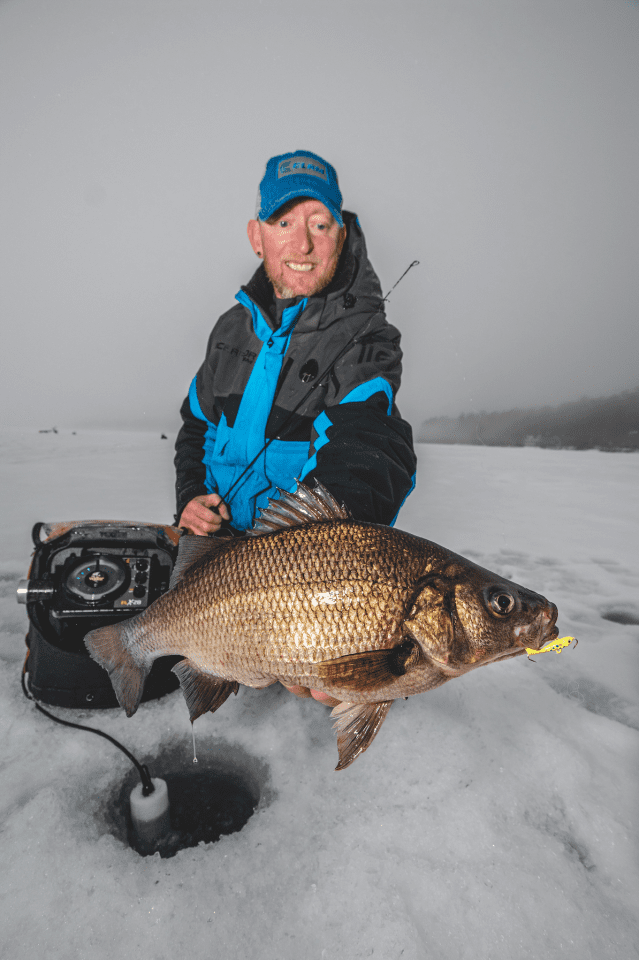A Match Made In Heaven
By, Tim Moore
One of the first lessons I teach new anglers and those looking to increase their catch is how to properly match their rod and reel to their line and lure. A correctly matched rod, line, and lure is an important ingredient in the success of any angler. Will you catch fish with an improperly matched setup? Sure, but with well-balanced gear you’ll catch more fish, feel your lure, detect more bites, and ultimately become a better angler.
The species of fish sought usually dictates what size rod and what pound test line to use, but lure weight and action often plays a heavy role in which rod and line to use. Every lure is designed to produce a specific action. Some lures are designed to be fished fast, while others are designed to be fished slowly. When fishing lighter lures, such as the Epoxy Drop, 2-3 pound test line will allow you to prod3uce the quick kicking action that drives most fish crazy. Light line will straighten out faster, allowing you to produce the quick kicking action that works for any of the Tungsten Drop Series lures.
Depending on the size of the fish you are after, a 24 or 26-inch rod will allow you to control your lure, but also detect bites under most circumstances. If you increase the size of your lure, say to a ¼ ounce blade spoon, you’ll want to increase the size of your line and rod to accommodate more weight on the business end of your setup. A 28-inch rod paired with 4-pound test line is a more appropriate match for a heavier l
ure, such as a ¼ ounce Blade Spoon. If your lure is too heavy for your rod it will load the rod and prevent you from controlling the lure and detecting bites.
Selecting line for use in cold weather presents a unique challenge. Even the best monofilament line has memory, especially when it gets cold. When your line comes off the spool it is going to want to coil. These coils act as springs and can dampen the action you are attempting to produce with your lure. Line coils also prevent you from detecting bites by adding cushion the same way a shock absorber adds cushion to your vehicle. Your line should be light enough that your lure can straighten it out. Small jigs like the Epoxy Drop or Dingle Drop work best with 2 or 3-pound test line. Increase the size of your lure and you should increase the size of your line.
Rod construction is very specific. Every rod is built to certain specifications based on power and action. Power (light to heavy) refers to how much pressure it takes to flex a rod, and action (slow to fast) is determined b
y where the rod flexes. With today’s rod construction you can tailor your rod to the lure you’re using and fish species you’re after. For instance, due to the size and power of Lake Winnipesaukee’s white perch, I prefer the 30-inch Jason Mitchell Gen8 and 28-inch Dave Genz Legacy series combos. I run these combos with 3 pound test line for Epoxy Drops and 4 pound test line for Blade Spoons. These set ups are a little heavier than I would recommend for most other species, but you never know when a lake trout will hit your line while white perch fishing on Winnipesaukee. Eve
n with slightly heavier set ups, I still get good lure control, bite detection, and can handle the power of 2 to 3 pound white perch.
One of the best ways to gain an appreciation for a matched setup is to fish with one that isn’t matched well. It won’t take long to realize how much of an advantage the right match gives you. When you change the size of your lure, be sure you make the necessary adjustments to the rest of your gear. A properly matched setup allows you to maximize the potential of your equipment, which means better sensitivity, better lure control, and more success. More success means more confidence, and more confidence means more fish.
Tim Moore is a year-round professional fishing guide in New Hampshire. He owns and operates Tim Moore Outdoors, LLC. He
is a member of the New England Outdoors Writers Association and the producer of Tim Moore Outdoors Fishing on YouTube. Visit www.TimMooreOutdoors.com for more information. Email questions or comments to info@TimMooreOutdoors.com.
